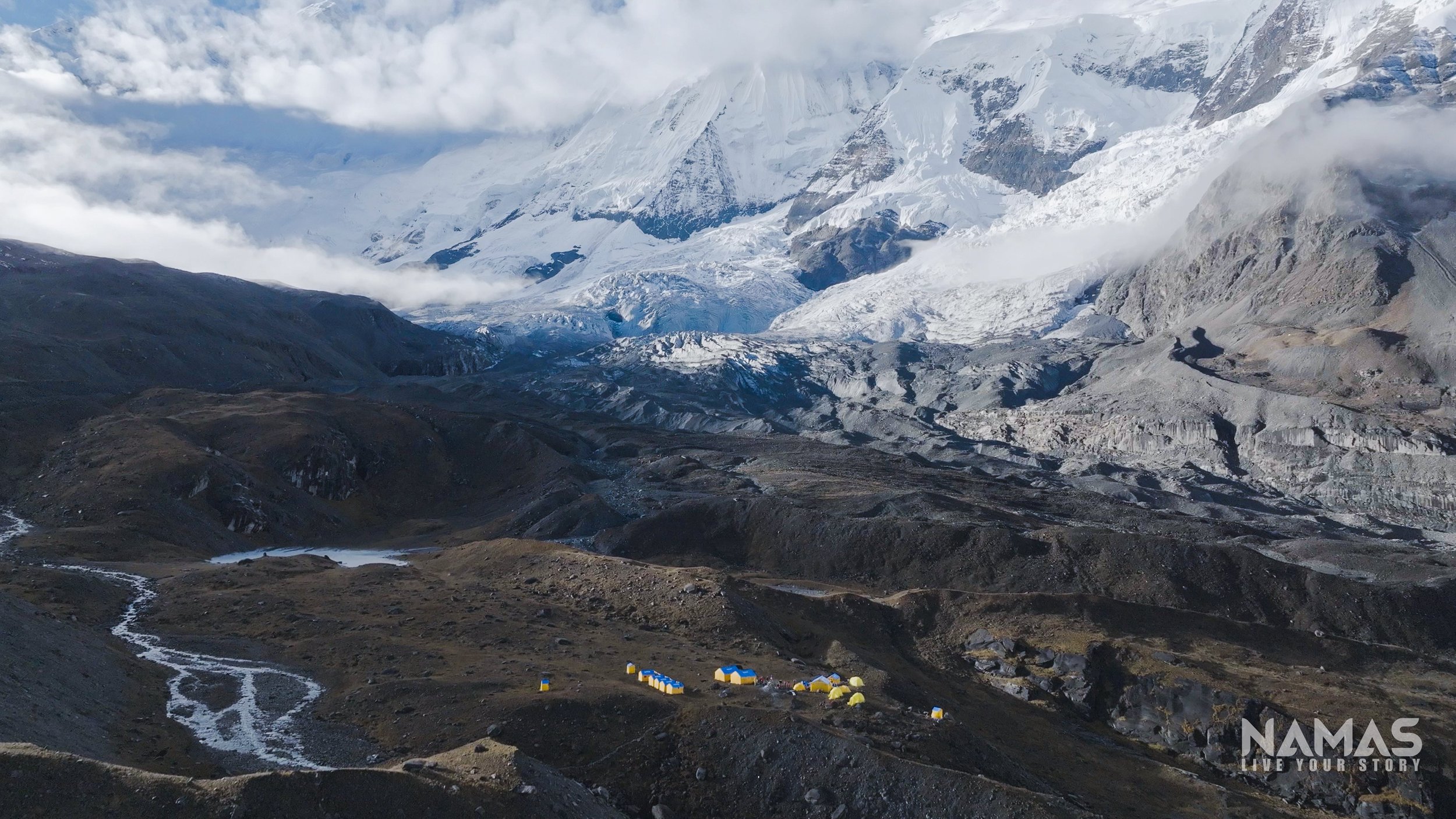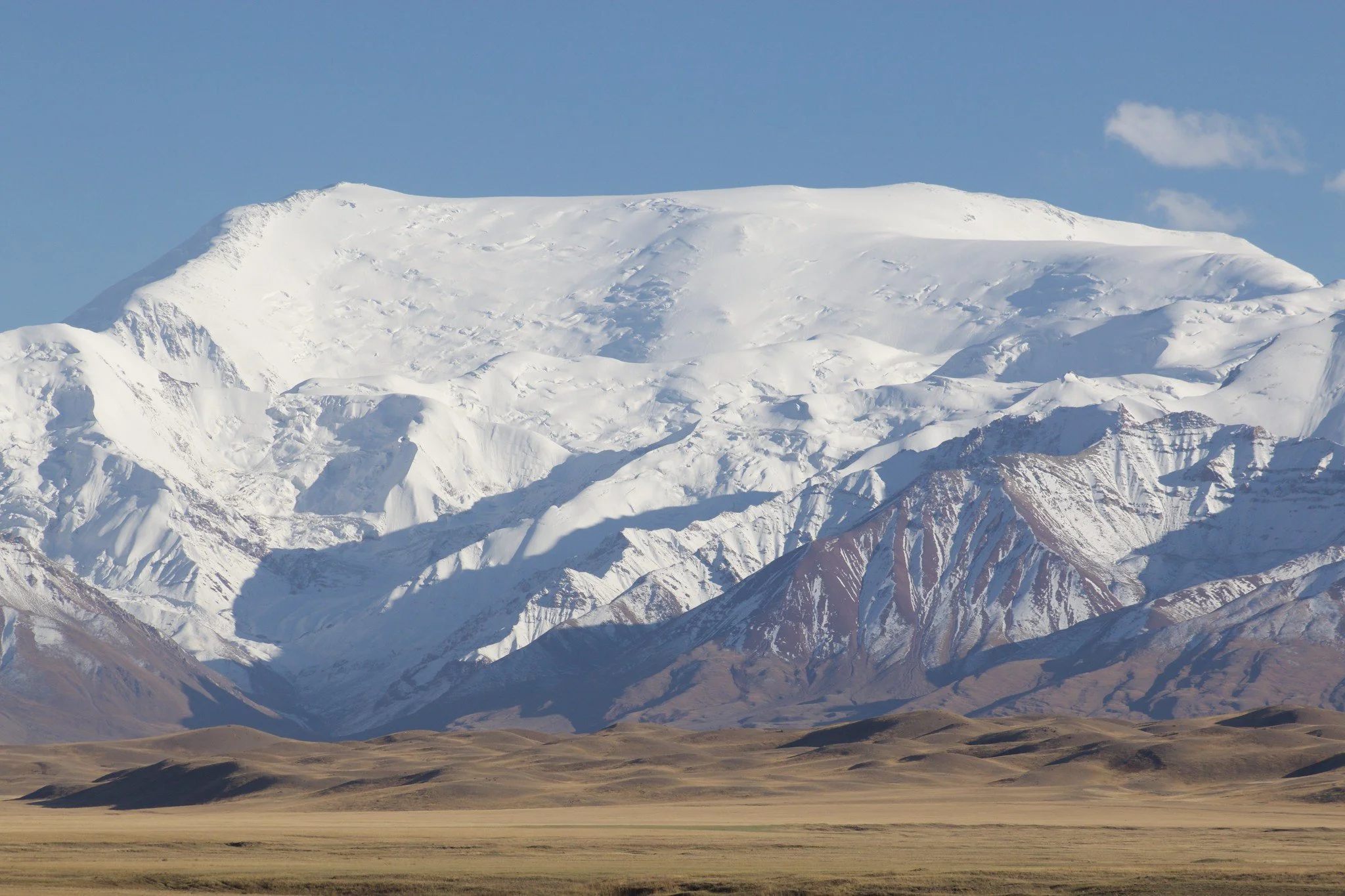Comparing 7000M Peaks: Which One is Right for Your Next Expedition?
Annapurna IV 7525M summit seen in the middle with Annapurna 2 on the left.
Perhaps you have completed several 4,000m to 6,000m summit expeditions and are now seeking a greater challenge. You might be exploring 7,000m mountains to enhance your high-altitude mountaineering experience, with aspirations of climbing Everest or one of the other 8,000m peaks. Alternatively, you may simply wish to immerse yourself in the pure exploration and remoteness that these high-altitude adventures offer.
Unsure on which 7000M peak to choose? In this blog post, we compare five prominent 7,000m mountain expeditions—Annapurna IV 7525M, Baruntse 7129M, Tilicho Peak 7134M, Himlung Himal 7126M, and Lenin Peak 7134M—to help you make an informed decision for your high-altitude journey.
1. Annapurna IV (7,525m)
Location: Annapurna Range, Nepal
Level: Advanced level
Technical Difficulty: High
Best Time to Climb: Spring (April-May) and Autumn (September-October)
Duration: 30 days
Key Features: Annapurna IV is a remote and lesser-climbed peak in the Annapurna range, known for its technical challenges. Climbers must have advanced skills in rock and ice climbing, as the route includes steep sections, exposed ridges, and deep snow. The peak's isolation offers a more immersive and adventurous experience, but it also demands excellent logistical planning. With only about 150 people ever reaching the summit, Annapurna IV is ideal for seasoned mountaineers seeking a quieter climb.
P.s. - Annapurna IV can be your expedition to prepare for Everest, Annapurna 1 or K2 expeditions.
Pros: Quieter, remote, and ideal as preparation for Everest or technical 8000m peaks.
Cons: Avalanche risk, technical sections, and steep terrain make it unsuitable for beginners.
2. Baruntse (7,129m)
Location: Barun Region, Nepal
Level: Intermedaite level
Technical Difficulty: Moderate to High
Best Time to Climb: Autumn (October-November)
Duration: 24 days
Key Features: Baruntse sits between the Everest and Makalu ranges, offering breathtaking views of both. It is popular among climbers preparing for lower 8000m peaks like Manaslu 8163M or Cho Oyu 8201M. The ascent becomes more technical after 6900m, particularly along the exposed summit ridge, which requires climbers to stay focused under challenging conditions. It’s a solid test for intermediate climbers who are ready for more demanding expeditions.
Pros: A great option for climbers seeking a moderate technical challenge before moving to 8000m peaks.
Cons: Exposed summit ridge demands advanced skills and leaves little room for error.
3. Tilicho Peak (7,134m)
Location: Annapurna Range, Nepal
Level: Intermedaite level
Technical Difficulty: High
Best Time to Climb: Spring (April-May) and Autumn (October-November)
Duration: 25-30 days
Key Features: Tilicho Peak offers a dramatic climb above Tilicho Lake, the highest lake in the world at 4900m. Though less famous than other Annapurna peaks, Tilicho is a technically demanding climb with steep rock scrambling, snow, and ice conditions at higher altitudes. This peak is for experienced climbers who have strong mountaineering skills and the endurance to navigate long, steep sections. Due to its remoteness, logistical planning is crucial, and only experienced teams should attempt this climb.
Pros: Stunning, remote, and less crowded with incredible views.
Cons: Requires advanced technical skills and careful planning due to the isolation.
4. Himlung Himal (7,126m)
Location: Manaslu Region, Nepal
Level: Entry level
Technical Difficulty: Moderate
Best Time to Climb: Autumn (September-October)
Duration: 25-30 days
Key Features: Himlung Himal offers a more moderate challenge, making it an excellent choice for climbers looking for an introduction to 7000m expeditions. The route to the summit is non-technical, consisting mainly of steady snow slopes and moderate crevasses. It’s a great option for those with limited experience who want to test themselves at high altitudes without the intense technical demands of other peaks.
Pros: Suitable for less experienced climbers with a straightforward route.
Cons: May not appeal to those seeking a more rugged, technical challenge.
5. Lenin Peak (7,134m)
Location: Pamirs, Kyrgyzstan/Tajikistan
Level: Entry level
Technical Difficulty: Moderate
Best Time to Climb: Summer (July-August)
Duration: 21-24 days
Key Features: Lenin Peak is one of the most accessible 7000m peaks, attracting many first-time high-altitude climbers. Its long, glaciated slopes offer a relatively straightforward ascent with minimal technical sections, but the altitude is still a serious challenge. Climbers must be well-acclimatized to avoid altitude sickness, and the unpredictable weather—particularly strong winds—adds another layer of difficulty.
Pros: Ideal for beginners seeking a high-altitude challenge without intense technical demands.
Cons: Crowded during peak season, with risks associated with altitude and harsh weather.
Comparison Summary
Which Peak is Right for You?
For Advanced Climbers: If you're looking for a highly technical challenge, Annapurna IV and Tilicho Peak are your best options. These peaks offer steep routes with plenty of rock and ice climbing, perfect for climbers with significant experience and no interest in crowded routes.
For Intermediate Climbers: Baruntse provides a good balance between moderate and challenging sections, making it a solid choice for those with some technical skills who are preparing for lower 8000m peaks.
For Beginners: Himlung Himal and Lenin Peak are great for climbers who are new to 7000m expeditions and want to experience the challenge of high-altitude mountaineering without the intense technical difficulties of other peaks.
Choosing the right peak depends on your experience, skill level, and what you want to achieve. Whether you’re aiming for a quiet, immersive climb on Annapurna IV or looking for an accessible, non-technical adventure on Lenin Peak, there’s a 7000m peak out there for you.
For more details on these expeditions and to plan your next adventure, visit our 7000M expedition page.
NAMAS Adventure







